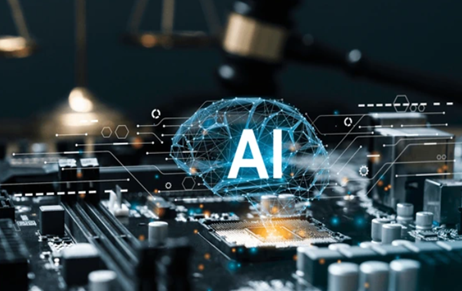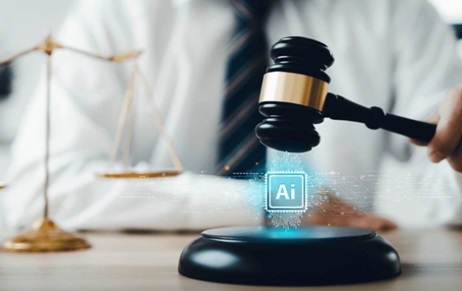Intellectual Property Rights (IPR) are like different keys for different locks. Just like every lock…
From Code to Characters: IPR in Gaming Industry
Introduction
The gaming industry has experienced exceptional growth in recent years, embracing as a crucial position in the global marketplace. This noticeable surge brings with it both opportunities and challenges. This blog helps in understanding the multiple role that IPR plays in safeguarding the rights of gaming sector. Other than the legal framework, IPR also fosters creativity, innovation and stimulates competition within the gaming industry.
According to the India Gaming Report 2024, India has one of the fastest user bases globally with more than 500 million games. It has also helped in creating jobs in India.
According to the Indian Gaming Report 2024, the gaming sector is expected to generate 250,000 jobs over the next 10 years.
IPR
IPR is an abbreviation of Intellectual Property Rights. It is a set of the legal framework that protects and governs the right of individual.
IPR in Gaming Industry
The creative and innovative ideas of the game developers need to be protected and here intellectual property Rights (IPR) plays a vital role in safeguarding innovation and encouraging fair competition within the sector. There are various laws in India that govern IPR and gaming laws, but the primary law are Patents Act, of 1970 , Trademark Act, of 1999 and Indian Contract Act, of 1872.
It is important for the game developers and industry players to know their rights and consequences of IPR that they might face. Since it promotes creativity, safeguards innovation and encourages fair competition. Video games are not covered by any specific area of IPR law in India.

COPYRIGHT
In a broader metaphorical context of gaming industry, Copyright emerges as a vital aspect of IPR. It grants the developer to use, distribute and reproduce their work. Copyright do not require any formal registration. Copyright helps in protecting the software or codes that run a video game. It also protects the graphics, visuals and soundtracks to ensure that game developers have control over these elements. Copyright also helps in protecting the narrative contents and preventing it from being copied. Licensing of their games are also controlled under Copyright only. India’s Copyright Framework is governed by the Copyright Act of 1957 which was amended for tackling with the modern technologies which includes video games.
According to India’s Copyright Act of 1957, creators has some exclusive rights over:
- Reproduction of work
- Distribution of work
- Display of work.
In accordance with section 65A of the Copyright Act, 1957, the Delhi High Court has issued injunction against Sony Computer Entertainment Europe Ltd. V. Harmeet Singh for copyright infringement.
PATENT
Patent is a right granted to a developer that excludes others from making, selling or even using the invention for a period of time i.e. from the date of application Patent lasts for 20 years. Anything that you make with your mind belongs to you and is covered under IPR and is protected under Patent. Patent is derived from Old French, Old Latin and Old English. If a game introduces any method that has not been seen before by anyone, may be patentable. Patents are given in the gaming industry for protecting technological inventions.
TRADEMARK
A Trademark is basically a sign or symbol used in business to distinguish its service from others. Trademark is a form of Intellectual Property which helps consumers from identifying and recognizing the product or service. Similarly in the Gaming Industry, Trademark helps developers from safeguarding their developments.
Trademarks protects the identity of the game, which ensures that no other developer can use the same title for their game which may cause any confusion between the players. Some popular game names are Call of Duty and Pubg.
Logos or symbols are also covered under trademark. For example ‘N’ is a symbol used by iconic Nintendo. And thus no other game developer can use symbol ‘N’ for their game as a symbol or logo. Trademark also protects the character names. For example famous character ‘Mario’ can be trademarked.
In the gaming industry, comprehensive protection is needed i.e. written works which includes underlying codes, musical designs which includes some unique sound tracks which plays important role in visual representation of video games and graphic designs which includes cartoons too need to be protected and thus Intellectual property gives some exclusive rights to the developers for safeguarding their innovations.
IPR gives more enjoyable gaming experiences to the developers and players by enforcing strict Intellectual Property laws which encourages fairer competition.
CONCLUSION
Gaming Industry is a vast area of landscape in which rights of developers needs to be protected to safeguard their innovations and foster their creativity so that no other person can infringe their rights by copying their innovative ideas. In conclusion, Intellectual Property Rights are crucial in the gaming sector for fostering the creativity, innovative ideas and economic value of games. Gamers are given some exclusive tools under Intellectual Property under Copyright, Trademark, Patent for fostering their works and protecting their logos, characters, and unique features. As the technology is getting more advanced, India has also seen a unbeatable rise in Gaming Industry. Thus, Intellectual Property helps in curbing the infringement and encourages fair competitions in the global market of gaming.
Author: Sanskriti Goswami, in case of any queries please contact/write back to us via email to chhavi@khuranaandkhurana.com or at IIPRD.
Reference: The Law Tree.



